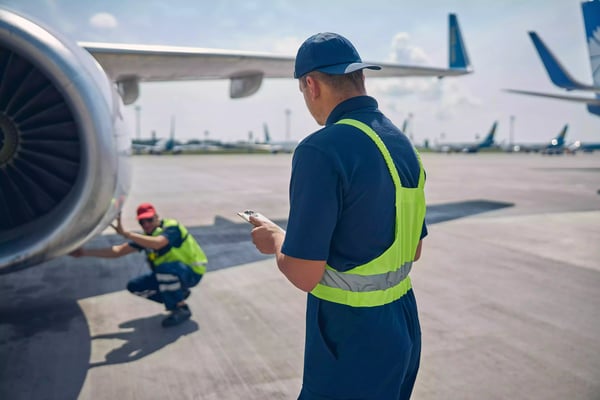Innovation in aviation is not as widely adopted as in other industries. Legislation often doesn’t provide enough guidance how to introduce new technology. This often results in companies failing to implement, while if you work closely with regulators this could be the key turning point for success!
As new technologies, processes, and ideas emerge, aviation regulators must adapt and update their rules and standards to ensure safety, efficiency, and sustainability in the industry. Innovation often introduces new safety features, systems, and procedures. Regulatory bodies need to assess these innovations with industry partners and update safety regulations accordingly to address potential risks, opportunities and ensure the continued safe operation of aircraft.
Innovations in digital technologies and automation are transforming various aspects of maintenance. For example, the development of digital signature and archiving can lead to more robust safety standards for record keeping. On top of that autonomous aircraft inspection could set a standard for high level of quality and safety inspections.
Current state
Currently, EASA (European Union Aviation Safety Agency) is responsible for regulating aviation safety, including new technology implementation, within the European Union. Part 145 of the EASA regulations outline the requirements for the maintenance organization approvals and covers the maintenance of aircraft and aircraft components. Subpart A of Section 145 (Sections 145.30-145.70) provides specific details about the organization and management of maintenance organizations seeking EASA Part 145 approval.
Regulation authorities check the processes and assess risks through audits and self-assessments. Approval prior implementation is mandatory and authorities could block the implementation if they think the application is not sufficient.
The future
The industry leaders and software suppliers should work together with regulators to establish guidelines for the use of these technologies to ensure their safe and secure implementation while addressing issues such as cybersecurity, data privacy, and human-machine interaction.
As an example, when implementing digital signature and archiving at RJC, there was no guidance for the local authority on how to review the new way of working. As a result, the team involved regulators during the whole project and provided insights on the technical development and possibilities. Together with the local authorities we were then able to set a benchmark for later reviews. So, my advice is to try to work together as much as possible to speed up the implementation process and set a guideline for the future.
In summary, innovation in aviation necessitates continuous adaptation of regulatory requirements. Regulators play a crucial role in assessing new technologies, addressing potential risks, and updating rules to foster safety, efficiency, and sustainability in the ever-evolving aviation industry.


 Remon Sweers
Remon Sweers
 If you are interested in knowing how you can improve your efficiency in maintenance operations, book a 30-minutes discovery call with us.
If you are interested in knowing how you can improve your efficiency in maintenance operations, book a 30-minutes discovery call with us.

